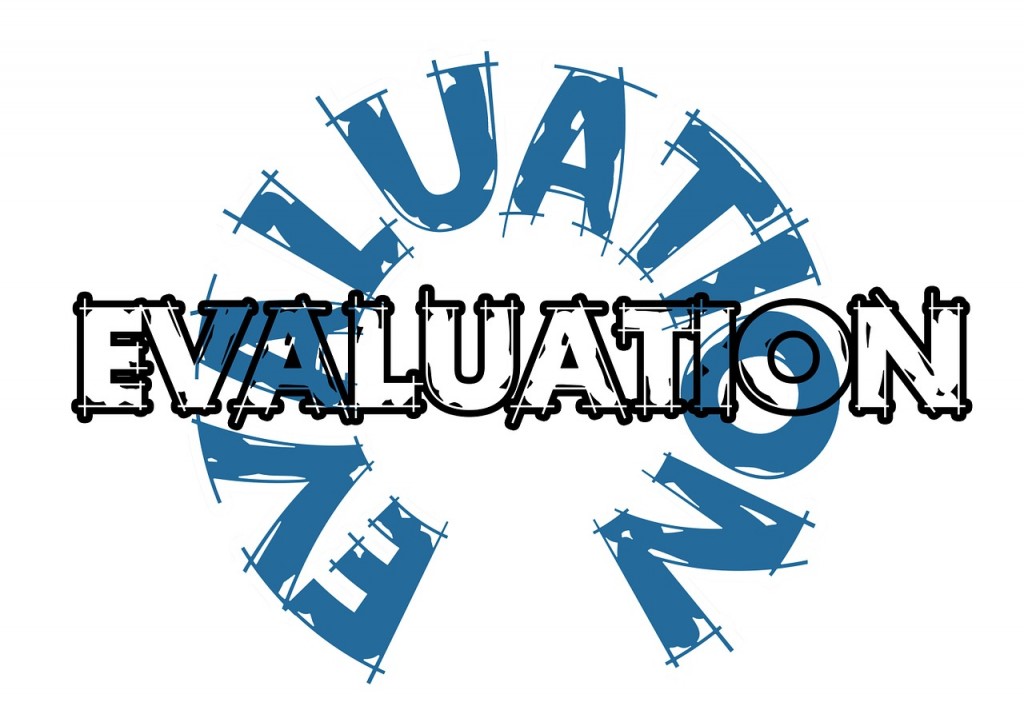Why We Stopped Performance Appraisals at CoffeeWORKS
Our journey to discover that Performance Appraisal systems, which usually end up with employees competing against each other, are destructive.
Suppose you were lost deep in the woods, and after hours of walking in one direction you realized you were walking in the wrong direction. However, you were unsure of the right direction but had received enough information to know you were walking the wrong way. What would you do?
This is getting us nowhere
We stopped using our performance appraisal system in early 2016 because we had enough evidence that it had failed to add value to our business.
That system was an annual review during which bosses in our company met employees and scored them as an “A”, “B”, or “C” performer. We would use this to allocate bonuses mainly to “As”, some to “Bs” and none to “Cs”. For years we had been seeing the weaknesses in this system, but didn’t have guts to abandon it because we didn’t have something to replace it with. So before you ask what we did replace it with, let’s first consider what we didn’t like about it:
- It was unfair.
- It was subjective.
- It fostered favoritism.
- It failed to recognize what quality godfather Dr. W. Edwards Deming taught—that the majority of the output of any one employee is attributable to the system they work in
- It was time-consuming and costly.
- It did not enhance employee performance.
- It increased fear and a caused suspicion.
- It caused employees and departments to compete against each other, rather than together against our competitors.
- It was completely inward focused, encouraging employees to shift focus from the customer.
Outcome-centered performance management
Next, we asked what we wanted our business to look like. What type of managers and employees did we want in our business and what type of behavior did we want to see more of.
We decided we wanted managers who:
- Understand systems thinking and who work on improving systems
- Understand principles of variation
- Truly care about their employees
We decided we wanted employees who:
- Take pride in their work and their company
- Are totally focused on supporting the customer
- Love to learn and teach others
We decided we wanted a company that:
- Encourages teamwork
- Is World Class in quality
- Is World Class in financial performance
- Is World Class in corporate governance
- Builds long-term relationships with suppliers
- Continually improves, every day
- Does not make the same mistakes over and over
- Provides on-the-job training to the highest possible level for each person
- Builds competitive advantage using Deming’s Plan-Do-Study-Act (PDSA) cycle
- Encourages risk taking
We continue to evolve our performance management and appraisal systems but feel like we have turned a corner and are now focusing on what really matters to employees and our bottom line.
If your friend jumped off a cliff, would you follow them?
I remember my mother saying that when I was young. Performance appraisal systems are lot like that, everyone is doing them. A comprehensive survey of 1,050 performance management leaders in 53 countries by Mercer (2013) outlined some amazing findings:
- Everyone does it: According to the 2013 study, 95% of organizations set individual goals and conduct a formal year-end review discussion. Eighty-nine percent of companies have a “pay for performance” philosophy for individual workers.
- Everyone thinks it does not deliver value: Three percent of those surveyed thought the performance management systems in their companies delivered “exceptional value”.
- Employees are not impressed: Workers rate only 14% of managers as “highly skilled” in holding performance evaluation discussions with employees and only 8% as highly skilled to ensure fair performance appraisals.
- Bosses can’t be candid: Employees rated only 5% of managers as highly skilled at having candid dialogue with their direct reports about that employee’s performance, yet employees rated this one activity as perceived to have the highest impact on the organization’s performance.
- US management style has fully spread to the rest of the world: In India, China, and South Korea about 60% of companies surveyed used forced ranking distributions.
We no longer dare to go against our teacher
When I had the chance to personally learn from Dr. W. Edwards Deming, he learned that Dr. Deming was very much against it, which was summarized very well in this article written by John Hunter of the Deming Institute (2012) from which he quotes one of Dr. Deming’s books saying:
“Evaluation of performance, merit rating, or annual review … The idea of a merit rating is alluring. The sound of the words captivates the imagination: pay for what you get; get what you pay for; motivate people to do their best, for their own good. The effect is exactly the opposite of what the words promise.”
What Dr. Deming discusses in the video below just past the five-minute mark is that it “cannot be done, on short range”. Part of his point was that employee performance is often just random variation inherent in the process. He highlights that it “annihilates teamwork” and that “it is purely a lottery”.
Deming disciple Peter Scholtes says it’s bad
Dr. Deming refer to employee engagement expert Peter Scholtes with respect, and Peter was against it. A former parish priest and civil rights activist, Scholtes wrote in 1998 what has become a management classic, The Leader’s Handbook, which made the definitive case against performance appraisal—a practice he argued was demoralizing and wrong. Below we outline a list from his blog post (2009) which gives eight reasons why performance appraisals are bad:
- Disregards and, in fact, undermines, teamwork.
- Disregards the existence of a system. It encourages individuals to squeeze or circumvent the system for personal gain rather than improve it for collective gain.
- Disregards variability in the system and, indeed, increases variability in the system.
- Uses a measurement system that is unreliable and inconsistent.
- Encourages an approach to problem-solving that is superficial and culprit-oriented.
- Tends to establish an aggregate of safe goals—a ceiling of mediocrity—in an organization.
- Creates losers, cynics, and wasted human resources.
- Seeks to provide a means to administer multiple managerial functions (such as pay, promotion, feedback communications and direction-setting), yet it is inadequate to accomplish any one of them.
The Microsoft Experience
Lost decade due to forced-ranking appraisals
In his article about Microsoft, former employee, Kurt Eichenwald (2012) highlighted the company’s performance appraisal system as a contributing factor to what he called a lost decade. The article cascades through many different issues, but the quotes which resonate the most are as follows:
“At the center of the cultural problems was a management system called ‘stack ranking’. Every current and former Microsoft employee I interviewed—every one—cited stack ranking as the most destructive process inside of Microsoft, something that drove out untold numbers of employees. The system—also referred to as ‘the performance model’, ‘the bell curve’, or just ‘the employee review’—has, with certain variations over the years, worked like this: every unit was forced to declare a certain percentage of employees as top performers, then good performers, then average, then below average, then poor. ‘The six-month reviews forced a lot of bad decision-making,’ one software designer said. ‘People planned their days and their years around the review, rather than around products. You really had to focus on the six-month performance, rather than on doing what was right for the company’.”
Employees hated it
Frederick E. Allen outlines in his Forbes article, The Terrible Management Technique that Cost Microsoft its Creativity (2012), the destruction caused by a forced rank system of Performance Appraisal. But, what we found most striking were some of the 187 comments to the article, such as:
Former Microsoft employee (just1guy)
“I worked at Microsoft in the DOS (not as glamorous as windows or office but fun) It always came down to who your manager was when it came to reviews. If you had a good relationship, always in her ear, always helping her look good you got a 4-4.5 ranking (out of 5) typically no one got a 5 unless you redesigned office or wrote the next gen code. … I averaged a 4.25 or something it was not because I was the smartest guy in the room but it was because I had an incredibly strong relationship with my manager and helped him manage up and showcase his talents as a leader.”
Former Microsoft employee (SoccerMom)
“I worked there for 14 years and was let go in January. The issue with the stack ranking is that it has nothing to do with your performance, since you have a separate rating for achieving your commitments. Your stack ranking has everything to do with your relationship with your manager and your manager’s relationship with his peers and management. Your manager has to fight to get his employees in the upper ranks, and can do this by sacrificing another employee in the bottom bucket. Hence, you never want to end up with a manager that does not like you. I had 10 different managers in my time and only two didn’t like me; however, the last one didn’t like me and that was the end of my career.”
Former Microsoft employee (Hawjo)
“I worked there for over a decade. I got mostly high, with a few medium, reviews. I hated it. I hated it even more when I became a manager and had to run stack ranks for my team. The worst part was ‘the merge’ when (as a manager) you got together with all your peers (and your boss) and merged your stack rank in with everyone else’s in the group. You’d haggle over who got bumped up to the next category and who got bumped down. That’s where the ‘visibility among other managers’ bit came into play. If your employee had lots of positive visibility with your peers, then it was easier to argue for him to get bumped up. But, if he was an excellent engineer who got his job done but wasn’t in everyone else’s faces all day, then it was really hard to generate any support for him in the stack rank.
I wouldn’t say it was ‘the’ reason Microsoft went downhill so fast, especially since stack ranking has more or less always been a part of MS management culture. But when the compensation changes came in 2000 that went away from stock options, the implications of the stack rank became far more significant. It was the change in compensation that turned stack ranking from an obnoxious process to a team killer.”
Not a former Microsoft employee but observing the comments (John Forde)
“It also appears that this whole ranking system is largely a waste of time. Imagine the hours spent processing all those review forms and compiling the spreadsheets required … not to mention navigating the office politics leading up to, during, and after ratings season. All based, as you point out, not on performance (how does one reduce that to a statistic when the innovation question is involved anyway), but on who kissed up best.”
Employees don’t like it
From their article, Why Employees Dislike Performance Appraisals, Gary Roberts and Michael Pregitzer (2007) outlined the problems they see with performance appraisals, from the employee’s perspective, which we summarize below:
Subjective: Managers do not always rate employees on objective criteria, which leads to a perceived and genuine unfairness in the rating process and its outcomes.
Bad mood: Research has shown that when the manager is in a bad mood, he is a much tougher performance rater and more focused on an employee’s mistakes and problems. Since the manager’s frame of mind is beyond the employee’s control, this adds unfairness and uncertainty to the process.
Good mood: And, opposite to #2 is when the manager is in a good mood they are more likely to overlook poor employee performance.
Hypocrisy: When managers ignore stated policies and procedures, the contradiction generates disappointment, distrust and cynicism among subordinates.
Mistrust: Employees will not go out of their way to provide the extra effort and creativity needed to solve problems when they lack trust in the integrity of management.
Favoritism: Happens when raters manipulate feedback to game the performance appraisal process to support their favorite employees and punish the least favored.
Infrequent: Employees like to receive feedback. They want to know how they are doing, frequently. But, performance appraisals are fixed and far apart.
Unqualified: Employees may not believe that their manager has the skills to provide appropriate feedback.
Superficial or rushed: Employees can get aggravated when feedback sessions are superficial, rushed or even interrupted.
Poor communication: Employees are unhappy if managers are unprepared or insufficiently trained to provide candid performance appraisals.
Bashing: Managers can “save up” examples of poor performance for the performance appraisal and clobber employees with poor ratings.
Baseless: There can be an absence of evidence to support the reviewer’s opinion.
Untrue rating: When managers don’t want to deal with conflict, they may give employees undeserved high ratings.
Many averages: Managers give most employees average ratings.
Harsh: Sometimes managers impose unreasonably high performance standards, which can demoralize and discourage employees.
Mismatch: When the manager is required to do a “forced distribution”, rating a percentage of their employees as below average, it can end up strongly conflicting with the employees’ opinion. Research demonstrates that employees, on average, rate their comparative job performance as better than 78% of the other people in the office. Therefore, most employee self-assessments conflict with the supervisor’s, creating a painful discrepancy.
We have stopped Performance Appraisals because they no longer work for us
Ultimately, there are strong reasons why the forced distribution employee appraisal process stubbornly maintains its place in our corporate cultures and workplaces. The reality is that it is the most expedient way of handling a complex challenge, and is also one of the least effective. It does, however, successfully create a mechanism where favoritism can be masked and where short-cuts to real performance management can be taken. It also can be a useful tool for maintaining the status-quo in an organization. Although practical alternatives at this time are limited, research is being done and it seems imperative that we look to replace the existing forced-distribution process with more responsible yet cost-effective methods of workplace performance appraisal and management.
So once we figured out we were heading in the wrong direction with regards to performance appraisals, we decided to stop doing them. We are less concerned about what we replace it with, and more concerned with stopping doing what we believe is doing more harm than good in our business.
Additional Reading
Coens, T., & Jenkins, M., 2000. Abolishing Performance Appraisals: Why They Backfire and What to Do Instead.
Chandler, M.T., 2016. How Performance Management Is Killing Performance-and What to Do About It.
Hauck, W., 2013. Stop the Leadership Malpractice: How to Replace the Typical Performance Appraisal.
Stotz, A., 2015. Transform Your Business with Dr.Deming’s 14 Points.
Sullivan, J., 2011. The Top 50 Problems With Performance Appraisals.
Strategy and Business: Kill Your Performance Ratings.
The Microsoft Review Time Capsule from 1997. Posted on August 30, 2013 by TheSaint in DirectXFiles, Managing Millennials’, Things that NEED to be said.
What do you think about performance appraisals? Do you think it’s better to stop it? What would you replace it with?
I’d love to hear from you in a comment below.
Feel free to share this article with your friends.
DISCLAIMER: This content is for information purposes only. It is not intended to be investment advice. Readers should not consider statements made by the author(s) as formal recommendations and should consult their financial advisor before making any investment decisions. While the information provided is believed to be accurate, it may include errors or inaccuracies. The author(s) cannot be held liable for any actions taken as a result of reading this article.










